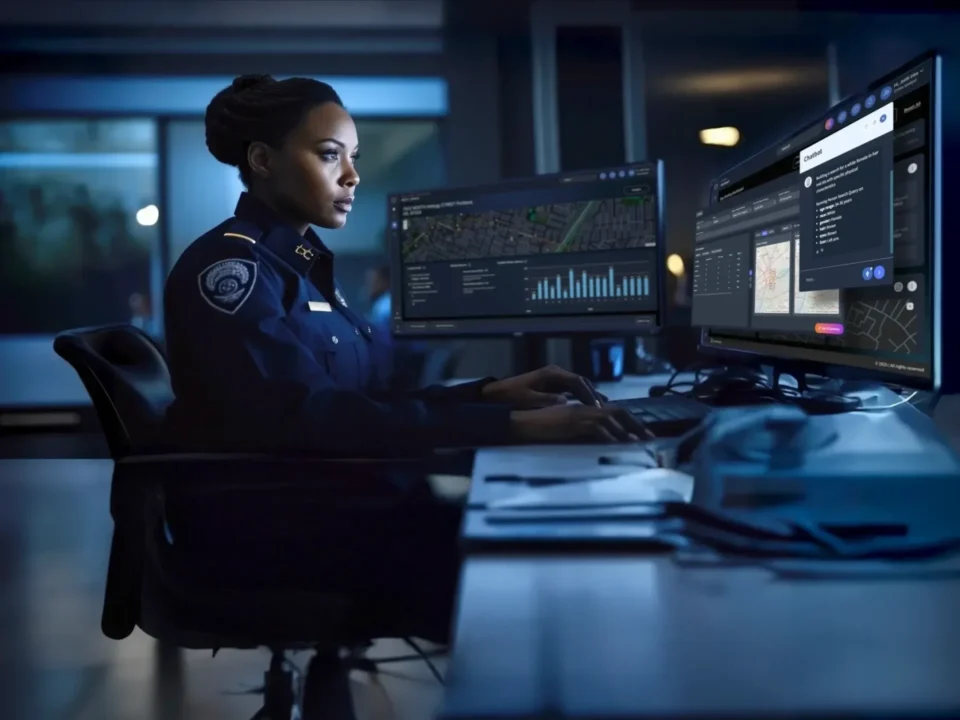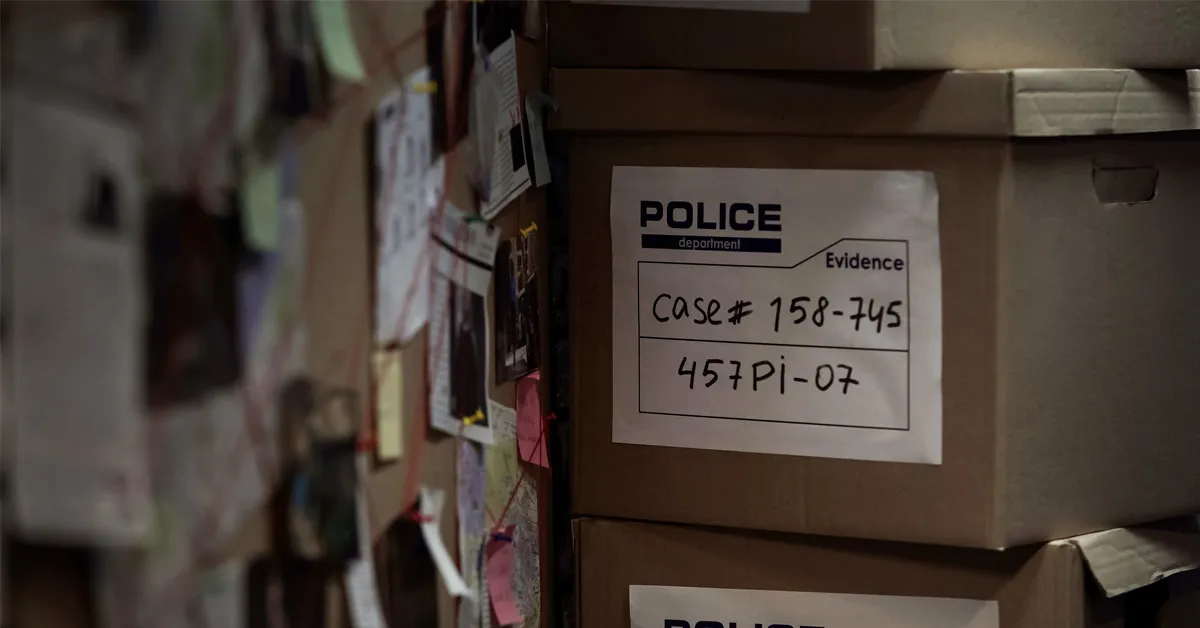When police use of force incidents occur, it’s important to document them comprehensively. But once you do, you can’t just file away the report without any follow-up. In this blog, we discuss 6 essential guidelines to follow when reviewing use-of -force reports.
When a field officer documents use of force incidents, they must follow four major standards:
- Document the precipitating and triggering events
- Detail the force used and escalation
- Document medical aid rendered, statements, and conferrals with the subject
- Have a formal process for immediate supervisor review
The fourth point is critical. After you spend time recording the incident in detail, you have to actually do something with the report; otherwise, the work was fruitless, and your agency will be in a negative position if or when negative attention or an allegation comes in. Use of Force events require a quality report but also demand review, oversight, and accountability. These are critical steps in these types of cases.
Plus, tracking how and why law enforcement personnel use force informs the department and fosters better transparency and public relations. Tracking leads to data, data leads to understanding, and understanding can result in fewer incidents in the future.
While reviewing the use of force report for use of force incidents seems like an obvious next step, it is still sometimes overlooked as a formality. This is especially true if the incident is perceived as being minor. When a use of force incident results in serious injury, then proper documentation, review, and investigation can easily be recognized as being important. But when an incident is viewed as minor, the same immediate attention is not always provided. In practice, no use of force incident, regardless of the level of injury, should ever be viewed as a matter of minor importance by agency supervisors.
Regardless of the severity of the use of force incident, the supervisory review process needs to be methodical and well-guided by written policy. Especially in today’s volatile climate with national unrest stemming from controversial incidents, agencies must establish strict, automatic processes that hold everyone more accountable in a more transparent process. Throughout the process, executive leadership must remain well informed of incidents and investigations as they develop so they are always in a position to respond, improve, and defend their agency.
Why Incident Review Matters
After a use-of-force incident, the involved personnel must immediately submit a report, and the patrol supervisor should be responsible for the timely review of the report to determine if any potential use-of-force policy violation is suspected and, if so, rapidly initiate a formal investigation. The supervisor should write their recommendation and send it immediately to the next level in the chain of command for review and endorsement. If the next-level supervisor disagrees with the prior supervisor’s findings, the report should be reconsidered until both parties concur. This process can continue up the chain of command, and mechanisms should be in place to ensure it is carried out and fully documented. Where an investigation is warranted, notification to internal investigators should be automated and instantaneous.
Multiple levels of supervision in an organization should be required to concur, in writing, before any use-of-force matter is closed without a full investigation. This is particularly important when a finding of no violation is reached, because you never want to close an incident prematurely only to be forced to re-open it for a second look later on.
Of course, needlessly sending every use of force incident for further investigation adds unnecessary work to an already heavily burdened caseload at internal affairs. Agencies can’t simply conduct full investigations every single time an officer uses even low levels of force, especially when there is no injury or complaint from the subject. Therefore, supervisors need to rely on a well-defined policy to substantiate when a violation may exist, and an investigation is warranted.
Following a well-defined procedure will help supervisors protect the agency and officers and prevent unnecessarily prolonged investigations while avoiding prematurely dismissing valid excessive force allegations.
To effectively and efficiently review a use-of-force report and minimize harm to the officer, subject or agency, follow these 6 guidelines.
#1. Review Immediately
When an incident occurs, the use of force report must be written immediately following the incident. The report, its review, the initial supervisor recommendation, and notification to agency executives should all happen contemporaneously with the incident.
Not many agencies have a timeline in their policy, but “immediate review” is the universal best practice. Situations evolve quickly. You can’t push off review until “first thing tomorrow morning” because new information could arise overnight that could compromise an investigation and put your agency behind the 8-ball when things go viral on social media. You want to get ahead of any possible issues or allegations, and the only way to be proactive with an incident is to gather the documentation, review it for accuracy, and start any follow-up investigation as soon as possible.
As a general rule: All use-of-force reports should be submitted before the end of the officer’s shift. Then, the review should be done before the end of the supervisor’s shift.
More than likely, the patrol supervisor is already familiar with the incident and knows that a report is on its way. After all, it’s their job to keep track of patrol units and what’s happening in the field.
So, the report is in the patrol supervisor’s hands. What next?
#2. Follow Agency Policy
A supervisor investigating use-of-force incidents should be thoroughly familiar with the agency’s use-of-force policies and refer back to them as needed during the fact-gathering and use-of-force review process. Always base decisions on written policy and written facts, not on hearsay, past experience, or opinions.
When a supervisor has been provided a well-defined and up-to-date agency policy, along with a well-written use of force report, they should be able to compare the report to the policy and answer these questions:
- Is this incident documentation complete, sufficient, and acceptable?
- Are facts missing? Have all witnesses given statements? Is anything else knowable?
- Is something lacking context or are any facts in dispute?
- Does the level of force used, or the injury sustained, reach a threshold that initiates an automatic full investigation?
The supervisor should be able to use the information gained during a preliminary investigation and a review of the documentation to make a decision if the incident appears to be within policy and can be administratively closed or if it is outside policy and needs to move to the next level of investigation. The supervisor will essentially complete a field investigation of their own to figure out if a full use-of-force investigation is warranted.
Note: Whenever deadly force is used or a serious physical injury is sustained a full investigation is typically triggered automatically.
Let’s dig deeper into what this “field investigation” looks like.
#3. Review Incident Witness Reports
There are two types of witnesses in a use-of-force incident that need to be considered during the field investigation.
First, there’s a citizen or co-defendant who saw the actual use of force (or precipitating or preceding events) take place.
Second, any other officers or secondary units who were on-scene are now considered “police witnesses,” even if they didn’t see the actual event occur.
For example, an officer might attempt to apprehend a subject, but there’s a struggle. They call for assistance, but before the secondary unit arrives, the officer controls the situation. The secondary unit didn’t see the use of force, but they are now a part of the scene and situation and should be considered a witness.
Booking officers and transport officers may also be considered witnesses in certain types of scenarios.
The patrol supervisor must seek input from all these witnesses to ensure their statements concur with the incident report. Written statements should be secured from civilian witnesses at the earliest opportunity. Each police witness should complete their use of force witness report, documenting their role and part in the incident, what they observed and any statements they heard. Any discrepancy, contradiction, or omission between witness statements is cause for further investigation. When things cannot be easily clarified in the field, a full investigation must be recommended.
The use-of-force policy should mandate that if police personnel witness a use-of-force incident, they must immediately report it, no matter how serious they perceive the event to be. There can be a tendency on the part of patrol officers not to report things that seem minor, or when they believe there is no policy violation on the part of their co-workers. However, this leaves the agency unprotected if an allegation is made later on, since police witness statements given after an allegation may be construed as an attempted “cover-up.”
Leveraging electronic systems to aid in the process of submitting and collating these statements can make things much more efficient for the officers and agencies involved.
#4. Field-Level Interview of Subject
Next, the patrol supervisor should also conduct a brief interview with the subject who experienced the use of force or any co-defendants. The goal, just like the witness report review, is to figure out if any discrepancies would be cause for further investigation. If the suspect is under arrest, legal warnings should be given, just as when questioning any suspect, and the suspect is, of course, free to refuse to answer (document the refusal). The supervisor may also limit the questions to address only the use of force that was applied and not the underlying criminal matters at hand.
For example, perhaps the incident report states that the officer used an arm lock to control the subject, secure the handcuffs, and effect the arrest. But upon later questioning by the supervisor, the subject states the officer threw him to the ground in a manner that was not detailed in the officer’s report. This discrepancy would certainly be cause for further investigation since there is either an omission in the officer’s report or a false accusation on the part of the suspect.
If a suspect makes an allegation of excessive force, then a formal complaint should be prepared immediately. Documenting the complaint immediately secures the statement early on and protects all involved. Waiting until after a suspect is released to see if they actually follow up on a threat to make a complaint is not a good strategy and can lead to public mistrust. Instead, confront the issue head-on by transparently documenting the allegation.
Many jurisdictions have a policy that requires such allegations to be signed by the complainant with a potential for criminal liabilities for making false statements, so preparing it immediately also provides an opportunity to obtain the signed complaint.
#5. Verify Injury & Medical Treatment
Along the same lines as the above, it’s important to verify the injury, treatment and medical diagnosis of a subject and see if there are any contradictions.
For example, if the incident report says, “I put the subject in an arm lock in order to gain compliance for handcuffing” but the medical report says, “bloody nose,” those two things clearly don’t coincide.
Also, the medical report is extremely important for case documentation.
Following use-of-force incidents, it is essential that medical aid is promptly provided to the subject.” This rendering of aid should be thoroughly documented. The lack of visible injury or complaint from a subject should not negate the requirement for medical aid.
For example, a struggle ensues at the time of arrest and a suspect strikes his head against a wall while pulling away but suffers no visible injury. After the situation is under control, the subject claims to be fine and refuses medical aid. However, the officers are aware that the suspect struck his head during the interaction and are responsible for ensuring his well-being. Providing treatment is important even if the subject refuses or does not claim any injury. An ambulance should still be called, and the subject transported to the hospital. If the suspect refuses medical aid it should be in consultation with a medical professional, not with the police. In the end, if a suspect has had force used against them but has no injury, you want a medical professional to verify it, and if there is an injury you want it properly treated.
#6. Inform Leadership
Maintaining communication with leadership is critical during every step of reviewing use-of-force incidents. Just as the patrol supervisor should be immediately informed when a use-of-force incident occurs, the next level of leadership should be advised as soon as possible too. Electronic reporting systems can be used to keep the entire chain of command informed at each step along the way from the time the initial incident is reported, through review and endorsement, and at each step in any follow-up investigation.
The patrol supervisor’s recommendation should always go up at least one level in the chain of command for endorsement for relatively minor incidents and even higher for more serious incidents, with the most serious being endorsed by the agency executive.
The endorsements provide an important check and balance because even though most use-of-force incidents are legitimate, the personal relationship between an officer and the patrol supervisor is typically strong, as they rely on each other to remain safe while they perform their duties. However, this can create at least the appearance of implicit bias. But if you go up a level, to the platoon commander, for instance, the relationship with the individual officer isn’t likely to be as strong. The further you go up the chain of command, the fewer conflicts of interest usually exist.
Strong policy for the review process of use-of-force incidents is needed. Lack of a formal process can place line supervisors in a difficult position. When the process is left as a supervisor’s judgment call and an incident is sent up the chain, it can cause animosity in the unit. The patrol officer, who works closely with the supervisor, might wonder why they seemingly escalated a minor incident. On the other hand, the supervisor might not want to take a minor incident to management if, for example, the next person up the chain is busy and doesn’t want to be seen as indecisive or overreacting. Well-defined policy protects and informs everyone involved and maintains good order.
In the end, the overwhelming majority of use-of-force incidents are proven to be justified. However, even justified incidents can cause significant issues between the police and the community and generate negative press or social media coverage. Those issues can be exacerbated when leadership is left in the dark or is slow to respond. Agency leadership must be kept fully informed at all times in order to effectively manage the organization and maximize its community relations.
In your agency, it’s important to make this process of informing leadership part of the standard routine to avoid tension and conflict in the field and keep leadership in the know, no matter how minor you think an incident might be.
Conclusion
The review process for use-of-force incidents is a critical step in managing an agency’s risk, improving community relations, and ensuring force investigations are initiated rapidly whenever warranted.
A contemporaneous field investigation and review by the patrol supervisor is an important step in ensuring the use of force policy is adhered to and transparency can be achieved. That’s why the supervisor’s review must be fully documented in a timely fashion and then endorsed by well-informed agency executives.
Want to automate use-of-force incident reporting, review, and investigation? CaseBuilder® can help.






